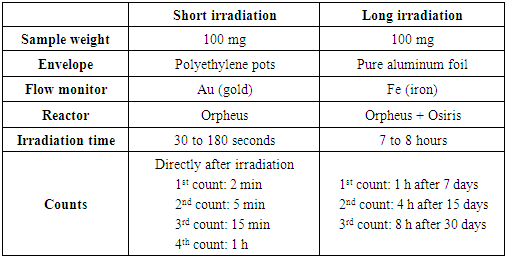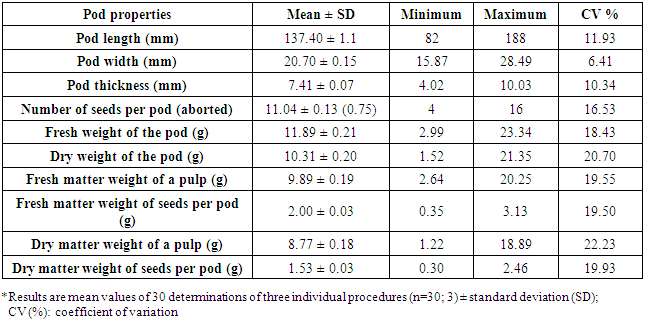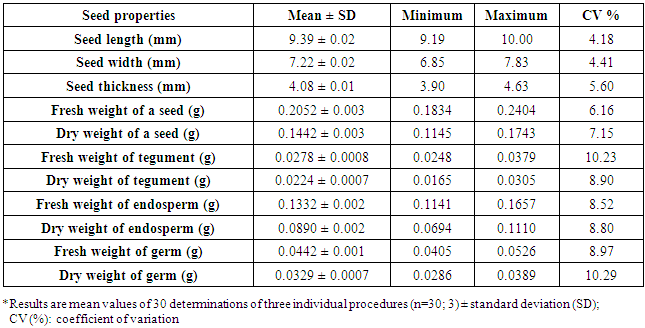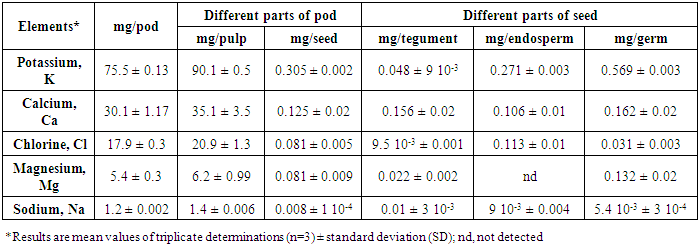| [1] | Battle, I. and Tous, J., 1997. Carob Tree. Ceratonia siliqua L. Promoting the conservation and use of underutilized and neglected crops. 17. Rome, Italy: Institute of Plant Genetics and Crop Plant Research, Gatersleben/International Plant Genetic Resources Institute. 92 p. |
| [2] | Ramón-Laca, L. and Mabberley, D. J., 2004. The ecological status of the carob-tree (Ceratonia siliqua, Leguminosae) in the Mediterranean. Bot. J. Linn. Soc., 144(4), 431-436. |
| [3] | Esbenshade, H. W. and Wilson, G., 1986. Growing carobs in Australia. Victoria: Goddard and Dobson. 136 p. |
| [4] | Esbenshade, H., 1994. Olives and carobs for landcare and profit in South Australia. National Symposium on Olives and Carobs for Landcare and for Profit. The University of Adelaide, Roseworthy Campus, Australia, pp. 5-17. |
| [5] | Lizardo, R., Cañellas, J., Mas, F., Torrallardona, D. and Brufau, J., 2002. L’utilisation de la farine de caroube dans les aliments de sevrage et son influence sur les performances et la santé des porcelets. Journ. Rech. Porcine, 34, 97-101. |
| [6] | Ouchkif, M., 1988. Etude sur le caroubier. Append Number 8 of Project Oued Srou. (Maroc-GTZ Germany), DPA of Khenifra. |
| [7] | Morton, J. F., 1987. Carob. In Dowling, C.F.Jr (ed.). Fruits of Warm Climates. Florida Flair Books, Boynton Beach, Miami, FL, pp. 121-124. |
| [8] | Tous, J., 1990. El garrobo. Ed. Muniperna. Madrid, pp. 27-43. |
| [9] | Petit, M. D. and Pinilla, J. M., 1995. Production and purification of a sugar syrup from carob pods. LWT Food Sci. Technol., 28(1), 145-152. |
| [10] | El-Shatnawi, M. J. and Mohawesh, Y., 2000. Seasonal chemical composition of saltbuck in semiarid grasslands of Jordan. J. Range Manage., 53, 211-214. |
| [11] | Ayaz, F. A., Torun, H., Ayaz, S., Correia, P. J., Alaiz, M., Sanz, C., Grúz, J. and Strnad, M., 2007. Determination of chemical composition of Anatolian carob pod (Ceratonia siliqua L.): Sugars, amino and organic acids, minerals and phenolic compounds. J. Food Qual., 30(6), 1040-1055. |
| [12] | Biner, B., Gubbuk, H., Karhan, M., Aksu, M. and Pekmezci, M., 2007. Sugar profiles of the pods of cultivated and wild types of carob bean (Ceratonia siliqua L.) in Turkey. Food Chem., 100(4), 1453-1455. |
| [13] | El Batal, H., Hasib, A., Ouatmane, A., Dehbi, F., Jaouad, A. and Boulli, A., 2011. Sugar composition and yield of syrup production from the pulp of Moroccan carob pods (Ceratonia siliqua L.). Arab. J. Chem., in press DOI:10.1016/j.arabjc.2011.10.012. |
| [14] | Leroy, A., 1929. Élevage rationnel des animaux domestiques. Hachette éd., 448 p. |
| [15] | Albanell, E., Caja, G. and Plaixats, J., 1991. Characteristics of Spanish carob pods and nutritive value of carob kibbles. Cah. Opt. Medit., 16, 135-136. |
| [16] | Puhan, Z. and Wielinga, M. W., 1996. Products derived from carob pods with particular emphasis on carob bean gum (CBG). Report Technical Committee of INEC, 12, 123-127. |
| [17] | Avallone, R., Plessi, M., Baraldi, M. and Monzani, A., 1997. Determination of chemical composition of carob (Ceratonia siliqua): Protein, fat, carbohydrates and tannins. J. Food Compos. Anal., 10(2), 166-172. |
| [18] | Shawakfeh, K. Q. and Erefej, K. I., 2005. Pod characteristics of two Ceratonia siliqua L. varieties from Jordan. Ital. J. Food Sci., 2(17), 187-194. |
| [19] | Turhan, I., Tetik, N., Aksu, M., Karhan, M. and Certel, M., 2006. Liquid-solid extraction of soluble solids and total phenolic compounds of carob bean (Ceratonia siliqua L.). J. Food Proc. Eng., 29(5), 498-507. |
| [20] | Turhan, I., 2011. Optimization of extraction of D-pinitol and phenolics from cultivated and wild types of carob pods using response surface methodology. Int. J. Food Eng., 7(6), DOI: 10.2202/1556-3758.2300. |
| [21] | Khlifa, M., Bahloul, A. and Kitane, S., 2013. Determination of chemical composition of carob pod (Ceratonia siliqua L.) and its morphological study. J. Mater. Environ. Sci., 4(3), 348-353. |
| [22] | Würsch, P., 1988. Structure of tannins in carob pod and their antidiarrhoeic properties. In: Fito, P. and Mulet, A. (Eds.), Proc. 2nd Int. Carob Symp., 29 sep.-1 oct. 1987, Valencia, Spain, pp. 621-628. |
| [23] | Saura-Calixto, F., 1989. Effect of condensed tannins in the analysis of dietary fiber in carob pods. J. Food Sci., 53(6), 1769-1771. |
| [24] | Loeb, H., Vandenplas, Y., Würsch, P. and Guesry, P., 1989. Tannin-rich carob pod for the treatment of acute-onset diarrhea. J. Pediatric Gastroenterol. Nutr., 8(4), 480-485. |
| [25] | McLeod, G. and Forcen, M., 1992. Analysis of volatile components derived from the carob bean Ceratonia siliqua. Phytochemistry, 31(9), 3113-3119. |
| [26] | Kumazawa, S., Taniguchi, M., Suzuki, Y., Shimura, M., Kwon, M. S. and Nakayama, T., 2002. Antioxidant activity of polyphenols in carob pods. J. Agric. Food Chem., 50(2), 373-377. |
| [27] | Yousif, A. K. and Alghzawi, H. M., 2000. Processing and characterization of carob powder. Food Chem., 69(3), 283-287. |
| [28] | Gharnit, N., El Mtili, N., Ennabili, A. and Sayah, F., 2006. Importance socio-économique du caroubier (Ceratonia siliqua L.) dans la province de Chefchaouen (Nord-Ouest du Maroc). J. Bot. Soc. Bot. France, 33, 43-48. |
| [29] | Neukom, H., 1988. Carob bean gum: Properties and applications. In: Fito, P. and Mulet, A., (Eds.), Proc. 2nd Int. Carob Symp., 29 sep.-1 oct. 1987, Valencia, Spain, pp. 551-555. |
| [30] | Rizzo, V., Tomaselli, F., Gentile, A., La Malfa, S. and Maccarone, E., 2004. Rheological properties and sugar composition of locust bean gum from different carob varieties (Ceratonia siliqua L.). J. Agric. Food Chem., 52(26), 7925-7930. |
| [31] | Hoefler, A. C., 2004. Hydrocolloids. In Eagan Press Handbook Series. St. Paul, Minnesota: Eagan Press. |
| [32] | Bouzouita, N., Khaldi, A., Zgoulli, S., Chebil, L., Chaabouni, M. and Thonart, P., 2007. The analysis of crude and purified locust bean gum: A comparison of samples from different carob tree populations in Tunisia. Food Chem., 101(4), 1508-1515. |
| [33] | Curtis, A., Race, D. and Booth, B., 1998. Carob agroforestry in the low rainfall: A market and economic assessment. Publication No. 98/8. Australia: Rural Industry Research and Development Corporation (RIRDC). |
| [34] | Dionísio, M. and Grenha, A., 2012. Locust bean gum: Exploring its potential for biopharmaceutical applications. J. Pharm. Bioallied Sci., 4(3), 175-185. |
| [35] | Sandolo, C., Coviello, T., Matricardi, P. and Alhaique, F., 2007. Characterization of polysaccharide hydrogels for modified drug delivery. Eur. Biophys. J., 36(7), 693-700. |
| [36] | Dakia, P. A., Wathelet, B. and Paquot, M., 2007. Isolation and chemical evaluation of carob (Ceratonia siliqua L.) seed germ. Food Chem., 102(4), 1368-1374. |
| [37] | Feillet, P. and Roulland, T. M., 1998. Caroubin: A gluten-like protein isolated from carob bean germ. Cereal Chem., 75(4), 488-492. |
| [38] | Smith, B. M., 2009. Characterization and functionality of carob germ proteins (MS Thesis). Manhattan, K.S., Kansas State Univ., 89 p. Available from: <http:// krex.k-state.edu>. |
| [39] | Nielsen, S. S., 2003. Food analysis, 3rd ed. New York: Kluwer Academic/Plenum Publishers. pp. 105-106. |
| [40] | Taylor, C. M. and Pye, O. F., 1974. Foundations of nutrition. New York: The Macmillan Company, pp. 144-193. |
| [41] | Nielsen, S. S., 1994. Introduction to the chemical analysis of foods. USA: Jones and Bartlett Publishers, Inc. |
| [42] | Özcan, M. M., Arslan, D. and Gökçalik, H., 2007. Some compositional properties and mineral contents of carob (Ceratonia siliqua) fruit, flour and syrup. Int. J. Food Sci. Nutr., 58(8), 652-658. |
| [43] | Iipumbu, L., 2008. Compositional analysis of locally cultivated carob (Ceratonia siliqua) cultivars and development of nutritional food products for a range of market sectors. Thesis Univ. Stellenbosch, Stellenbosch. |
| [44] | Ayaz, F. A., Torun, H., Glew, R. H., Bak, Z. D., Chuang, L. T., Presley, J. M. and Andrews, R., 2009. Nutrient content of carob pod (Ceratonia siliqua L.) flour prepared commercially and domestically. Plant Food Hum. Nutr., 64(4), 286-292. |
| [45] | Gubbuk, H., Kafkas, E., Guven, D. and Gunes, E., 2010. Physical and phytochemical profile of wild and domesticated carob (Ceratonia siliqua L.) genotypes. Span. J. Agric. Res., 8(4), 1129-1136. |
| [46] | Sabatini, D. R., da Silva, K. M., Picinin, M. É., Del Santo, V. R., de Souza, G. B. and Pereira, C. A. M., 2011. Composição centesimal e mineral da alfarroba em pó e sua utilização na elaboração e aceitabilidade em sorvete. Alim. Nutr., Araraquara, 22(1), 129-136. |
| [47] | Youssef, M. K. E., El-Manfaloty, M. M. and Ali, H. M., 2013. Assessment of proximate chemical composition, nutritional status, fatty acid composition and phenolic compounds of carob (Ceratonia siliqua L.). Food Public Health, 3, 304-308. |
| [48] | El Hajaji, H., Farah, A., Ennabili, A., Bousta, D., Greche, H., El Bali, B. and Lachkar, M., 2013. Etude comparative de la composition minérale des constituants de trois catégories de Ceratonia siliqua L.. J. Mater. Environ. Sci., 4(2), 165-170. |
| [49] | Oziyci, H. R., Tetik, N., Turhan, I., Yatmaz, E., Ucgun, K., Akgul, H., Gubbuk, H. and Karhan, M., 2014. Mineral composition of pods and seeds of wild and grafted carob (Ceratonia siliqua L.) fruits. Sci. Hortic., 167, 149-152. |
| [50] | Fidan, H. and Sapundzhieva, T., 2015. Mineral composition of pods, seeds and flour of grafted carob (Ceratonia siliqua L.) fruits. Sci. Bull. Ser. F Biotechnol., 19, 136-139. |
| [51] | El-Shatnawi, M. J. and Ereifej, K. I., 2001. Chemical composition and livestock ingestion of carob (Ceratonia siliqua L.) seeds. J. Range Manage., 54(8), 669-673. |
| [52] | Parrado, J., Bautista, J., Romero, E. J., Garcia-Martinez, A. M., Friaza, V. and Tejada, M., 2008. Production of a carob enzymatic extract: Potential use as a biofertilizer. Bioresour. Technol., 99(7), 2312-2318. |
| [53] | Correia, P. M. and Martins-Loução, M. A., 1994. Preliminary studies on Mycorrrhizae of Ceratonia siliqua L. New York Botanical Gardens: Mycorrhizas in Integrated Systems from Genes to Plant Development. NY Bronx, 86-88. |
| [54] | Kira, C. S. and Maihara, V. A., 2007. Determination of major and minor elements in dairy products through inductively coupled plasma optical emission spectrometry after wet partial digestion and neutron activation analysis. Food Chem., 100(5), 390-395. |
| [55] | Marakis, S., Kalaitzakis, J. and Mitrakos, K., 1988. Criteria for recognizing carob tree varieties. Proc. 2nd Int. Carob Symp., 29 sep.-1 oct. 1987, Valencia, Spain, pp. 195-208. |
| [56] | Tous, J., Batlle, I. and Romero, A., 1995. Prospección de variedades de algarrobo en Andalucía. Inform. Téc. Econ. Agrar., 91V(3), 164-174. |
| [57] | Tous, J., Romero, A., Plana, J. and Batlle, I., 1996. Current situation of carob plant material. Proc. 3rd Int. Carob Symp., Cabanas-Tavira, Portugal. |
| [58] | Gharnit, N., El Mtili, N., Ennabili, T. A. and Ennabili, A., 2001. Social characterization and exploitation of carob tree (Ceratonia siliqua L.) from Mokrisset and Bab Taza (NW of Morocco). Sci. Lett., 3(2), 1-10. |
| [59] | Konate, I., 2007. Diversité phénotypique et moléculaire du caroubier (Ceratonia siliqua L.) et des bactéries endophytes qui lui sont associées, Université Mohammed V-Agdal, Faculté des Sciences Rabat, Thèse de doctorat. |
| [60] | Sidina, M. M., El Hansali, M., Wahid, N., Ouatmane, A., Boulli, A. and Haddioui, A., 2009. Fruit and seed diversity of domesticated carob (Ceratonia siliqua L.) in Morocco. Sci. Hortic., 123(1), 110-116. |
| [61] | El Kahkahi, R., Zouhair, R., Ait Chitt, M. and Errakhi, R., 2014. Morocco carob (Ceratonia siliqua L.) populations: Morphological variability of pods and kernel. Int. J. Pure App. Biosci., 2(4), 38-47. |
| [62] | Albanell, T. E., 1990. Caracterización morfológica, composición química y valor nutritivo de distintas variedades de garrofa (Ceratonia siliqua L.) cultivadas en España. Tesis Doct., Univ. Autónoma Barcelona, Fac. Veterinaria, Bellaterra, 209 p. |
| [63] | Bosch, J., Garcia Del Pino, F., Ramoneda, J. and Retana, J., 1996. Fruiting phenology and fruit set of carob, Ceratonia siliqua L. (Cesalpinaceae). Isr. J. Plant Sci., 44(4), 359-368. |
| [64] | Tous, J., Batlle, I., Rallo, J. and Romero, A., 2001. Prospección de variedades de algarrobo en las Islas Baléares. Invest. Agrar.: Prod. Prot. Veg., 16(2), 187-203. |
| [65] | Tous, J., Romero, A., Hermoso, J. F., Ninot, A., Plana, J. and Batlle, I., 2009. Agronomic and commercial performance of four Spanish carob cultivars. Hort. Technol., 19(2), 465-470. |
| [66] | Barracosa, P., Osorio, J. and Cravador, A., 2007. Evaluation of fruit and seed diversity and characterization of carob (Ceratonia siliqua L.) cultivars in Algarve Region. Sci. Hortic., 114, 250-257. |
| [67] | Naghmouchi, S., Khouja, M. L., Romero, A., Tous, J. and Boussaid, M., 2009. Tunisian carob (Ceratonia siliqua L.) populations: Morphological variability of pods and kernel. Sci. Hortic., 121(2), 125-130. |
| [68] | Ekinci K., Yılmaz, D. and Ertekin, C., 2010. Effects of moisture content and compression positions on mechanical properties of carob pod (Ceratonia siliqua L.). Afr. J. Agric. Res., 5(10), 1015-1021. |
| [69] | Bostan, S. Z. and Arici, Y. K., 2015. Evaluation of some carob (Ceratonia siliqua L.) genotypes in Silifke (Mersin, Turkey) province by cluster analysis. Meyve Bilimi/Fruit Sci., 2(1), 35-41. |
| [70] | Russo, G. and Polignano, G. B., 1996. Variation of seed and pod characters in Ceratonia siliqua L. cultivars. Genet. Resour. Crop Evol., 43(6), 525-553. |
| [71] | Russo, G. and D'Andrea, L., 2002. Evaluation and preservation of genetic resources of carob (Ceratonia siliqua L.) in Southern Italy for pharmaceutical use. J. Herbs, Spices & Medicinal Plants, 9(4), 367-372. |
| [72] | Orphanos, P. I. and Papaconstantinou, J., 1969. The carob varieties of Cyprus. Cyprus Agric. Res. Inst. Tech. Bull., 5, 1-13. |
| [73] | Nahla, A. A., 2014. Relationships among phenotypic, chemical and genetic characteristics of some selected and evaluated carob strains (Ceratonia siliqua). Int. J. Plant Soil Sci., 3(11), 1415-1427. |
| [74] | Haddarah, A., Ismail, A., Bassal, A., Hamieh, T., Ioannou, I. and Ghoul, M., 2013. Morphological and chemical variability of Lebanese carob varieties. Eur. Sci. J., 9(18), 353-369. |
| [75] | Price, H. J., Chambers, K. L, Bachman, K. and Riggs, J., 1986. Patterns of mean nuclear DNA content in Microseris douglasii (Asteraceae). Bot. Gaz., 147(4), 496-507. |
| [76] | Turpeinen, T., Kulmala, J. and Nevo, E., 1999. Genome size variation in Hordeum spontaneum Populations. Genome, 42(6), 1094-1099. |
| [77] | El Ferchichi Ouarda, H., Naghmouchi, S., Walker, D. J., Correal, E., Boussaïd, M. and Khouja, M. L., 2008. Variability in the pod and seed parameters and nuclear DNA content of Tunisian populations of Ceratonia siliqua L.. Agrofor. Syst., 74(1), 73-81. |
| [78] | Barracosa, P., Lima, M. B. and Cravador, A., 2008. Analysis of genetic diversity in Portuguese Ceratonia siliqua L. cultivars using RAPD and AFLP markers. Sci. Hortic., 118(3), 189-199. |
| [79] | Stephenson, A. G., 1981. Flower and fruit abortion: Proximate causes and ultimate functions. Ann. Rev. Ecol. Syst., 12, 253-279. |
| [80] | Karababa, E. and Coşkuner, Y., 2013. Physical properties of carob bean (Ceratonia siliqua L.): An industrial gum yielding crop. Ind. Crops Prod., 42, 440-446. |
| [81] | Avola, C., 2011. Caratterizzazione di semi di carrubo (Ceratonia siliqua L.) di differente origine geografica e proprietà tecnologiche della farina di semi (LBG). Università Degli Studi di Catania Facoltà di Agraria, Dottorato di Ricercain “Scienze e Tecnologie Alimentari” XXIV Ciclo. |
| [82] | El Batal, H., Hasib, A., Ouatmane, A., Boulli, A., Dehbi, F. and Jaouad, A., 2013. Yield and composition of carob bean gum produced from different Moroccan populations of carob (Ceratonia siliqua L.). J. Mater. Environ. Sci., 4(2), 309-314. |
| [83] | Bezzala, A., 2005. Essai d’introduction de l’arganier dans la zone de M’doukel et évaluation de quelques paramètres de résistance à la sécheresse, Magister Sci. Agron., Univ. El Hadj Lakhdar, Batna, Algérie, 152 p. |
| [84] | Nunes, M. A., Ramalho, C., Ramalho, D. C. J. and Rijo, P. S., 1992. Seasonal changes in some photosynthetic properties of Ceratonia siliqua (carob tree) leaves under natural conditions. Physiol. Plant., 86(3), 381-387. |
| [85] | Correia, P. and Martins-Loucão, M. A., 1997. Leaf nutrient variation in mature carob (Ceratonia siliqua) trees in response to irrigation and fertilization. Tree Physiol., 17(12), 813-819. |
| [86] | El-Dengawy, E. R. F. A., Hussein, A. A. and Alamri, S. A., 2011. Improving growth and salinity tolerance of carob seedlings (Ceratonia siliqua L.) by Azospirillum inoculation. Am. Eurasian J. Agric. Environ. Sci., 11(3), 371-384. |
| [87] | Refass, A., 2000. Analyse multi-élémentaire et analyse statistique de plantes à usage médicinal traditionnel au Maroc. Thèse Doct., Fac. Sci. Ben M'Sik, Univ. Hassan II – Mohammedia Casablanca, Maroc. |
| [88] | Loumeto, J. J., 1986. Contribution à l'étude de la distribution minérale dans les Eucalyptus du Congo. Thèse Doct. 3e cycle Ecologie, Univ. Rennes, France. 134 p. |
| [89] | Loubelo, E., 1990. Etude comparative de quelques éléments du fonctionnement de deux peuplements d'Eucalyptus au Congo. Thèse Doct. Sci. Biol. Univ. Rennes, France. 150 p. |
| [90] | Puchades, R., Roca, A., Serra, J. A. and Roig, M. A., 1988. Composición de la pulpa de algarroba de las variedades más representativas de la comunidad Valenciana. Proc. 2nd Int. Carob Symp., 29 sep.-1 oct. 1987, Valencia, Spain, pp. 169-181. |
| [91] | Salem, E. M. and Fahad, A. O. A., 2012. Substituting of cacao by carob pod powder in milk chocolate manufacturing. Aust. J. Basic Appl. Sci., 6(3), 572-578. |
| [92] | Castaldo, D., Lo Voi, A., Trifiro, A. and Gherardi, S., 1992. Composition of Italian kiwi (Actinidia chinensis) Puree. J. Agric. Food Chem., 40(4), 594-598. |
| [93] | Souci, S. W., Fachmann, W. and Kraut, H., 1994. Food composition and nutrition tables, 5th Ed, CRC Press, Boca Raton, FL, pp. 803-897. |
| [94] | Glew, R. H., Ayaz, F. A., Vanderjagt, D. J., Millson, M., Dris, R. and Niskanen, R., 2003. Mineral composition of medlar (Mespilus germanica) fruit at different stages of maturity. J. Food Qual., 26(5), 441-447. |
| [95] | Lo Voi, A., Impembo, M., Fasanaro, G. and Castaldo, D., 1995. Chemical characterization of apricot puree. J. Food Comp. Anal., 8(1), 78-85. |
| [96] | Gorinstein, S., Zachwieja, Z., Folta, M., Barton, H., Piotrowicz, J., Zemser, M., Weisz, M., Trakhtenberg, S. and Màrtin-Belloso, O., 2001. Comparative contents of dietary fiber, total phenolics, and minerals in persimmons and apples. J. Agric. Food Chem., 49(2), 952-957. |
| [97] | Meziou-Chebouti, N., Merabet, A., Behidj, N., Kirouani, M. and Aliouat, S., 2015. Chemical composition and antibacterial activity of Ceratonia siliqua L. growing in Boumerdes (Algeria). In New Developments in Biology, Biomedical & Chemical Engineering and Materials Science. Proc. Int. Conf. Chem. Engin. Mater. Sci. (CEMS 2015), Vienna, Austria, March 15-17, pp. 96-99. |
| [98] | Correia, P. J., Pestana, M., Domingos, I. and Martins-Loução, M. A., 2008. Nutritional evaluation of nitrogen and potassium fertilization of carob tree under dry-farming conditions. Commun. Soil Sci. Plant Anal., 39(5-6), 652-666. |
| [99] | MAFF (Ministry of Agriculture, Fisheries and Food) 1975. Energy allowances and feeding systems for ruminants. London: HMSO, Tech. Bull., 33, 80 p. |
| [100] | Tetik, N., Turhan, İ., Karhan, M. and Öziyci, H. R., 2010. Characterization of, and 5-hydroxymethylfurfural concentration in carob pekmez. GIDA, 35(4), 417-422. |




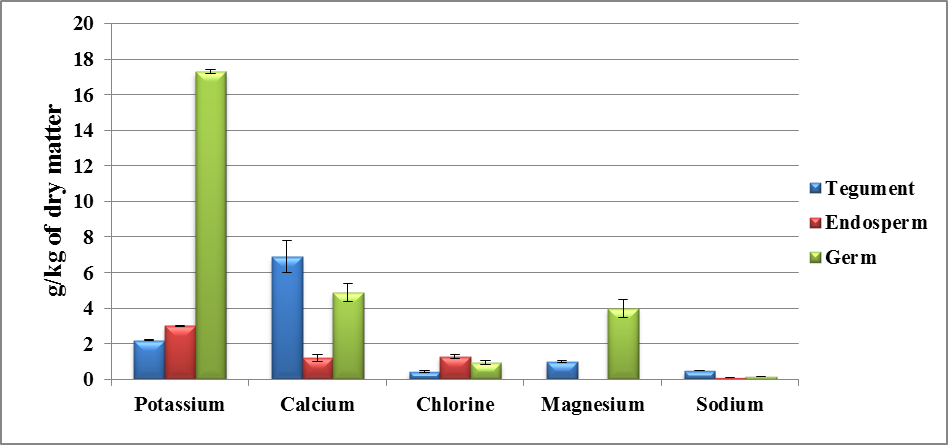
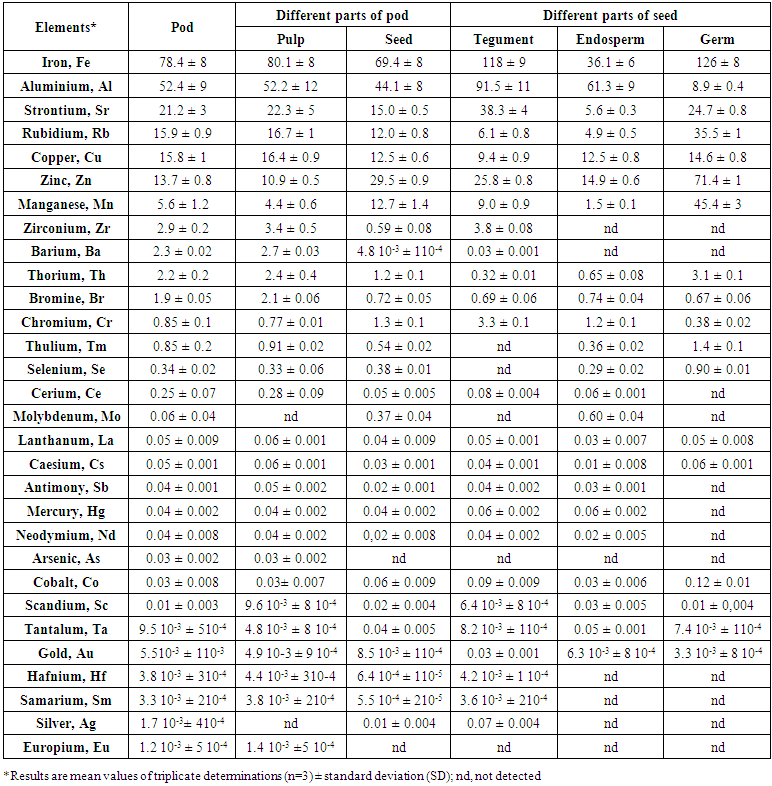
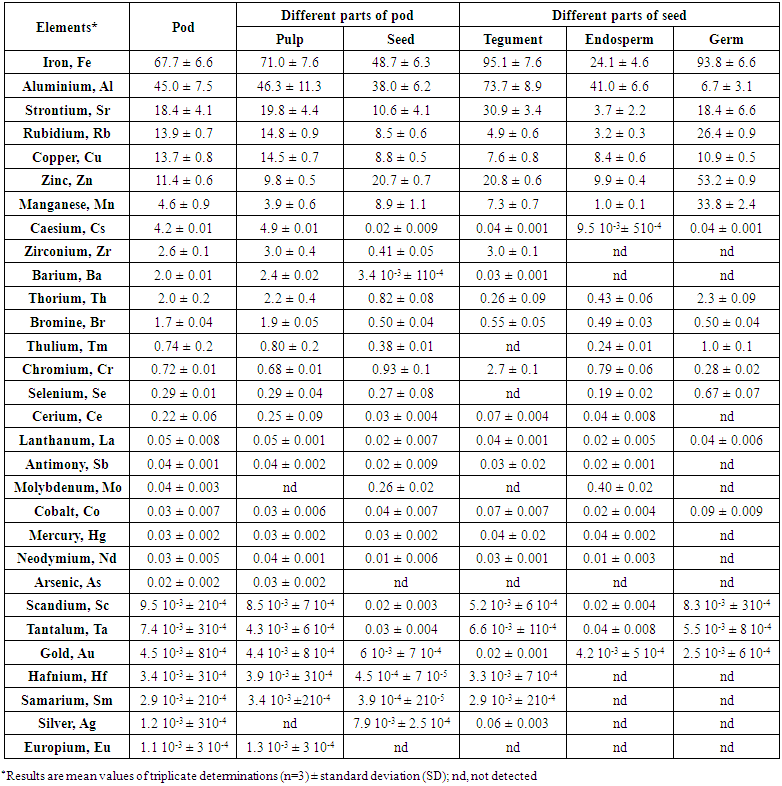

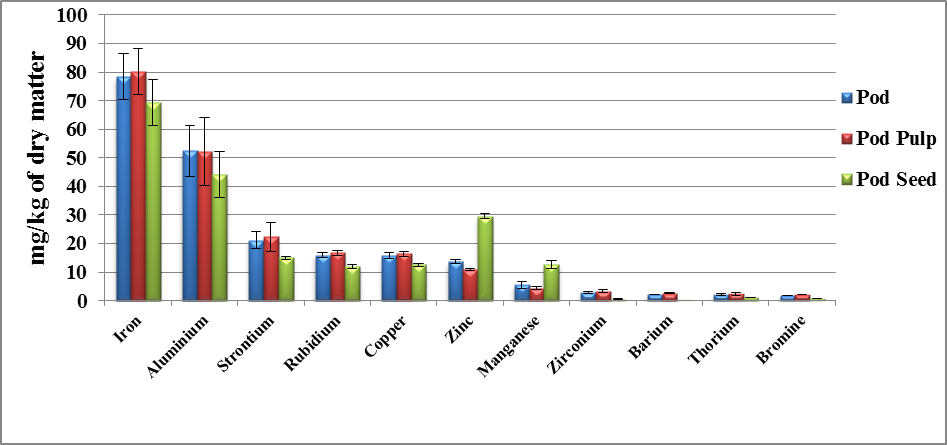
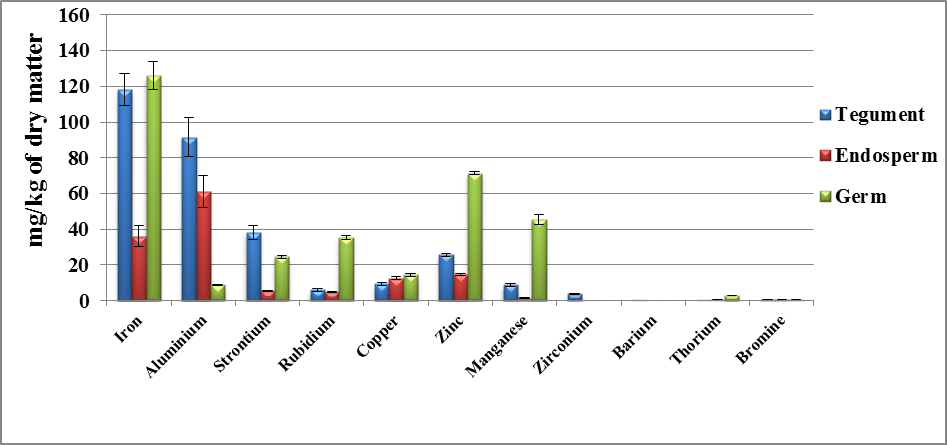
 Abstract
Abstract Reference
Reference Full-Text PDF
Full-Text PDF Full-text HTML
Full-text HTML